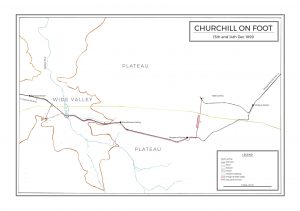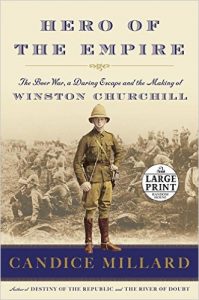
Finest Hour 171
Into the Lion’s Jaws: Churchill in the Boer War
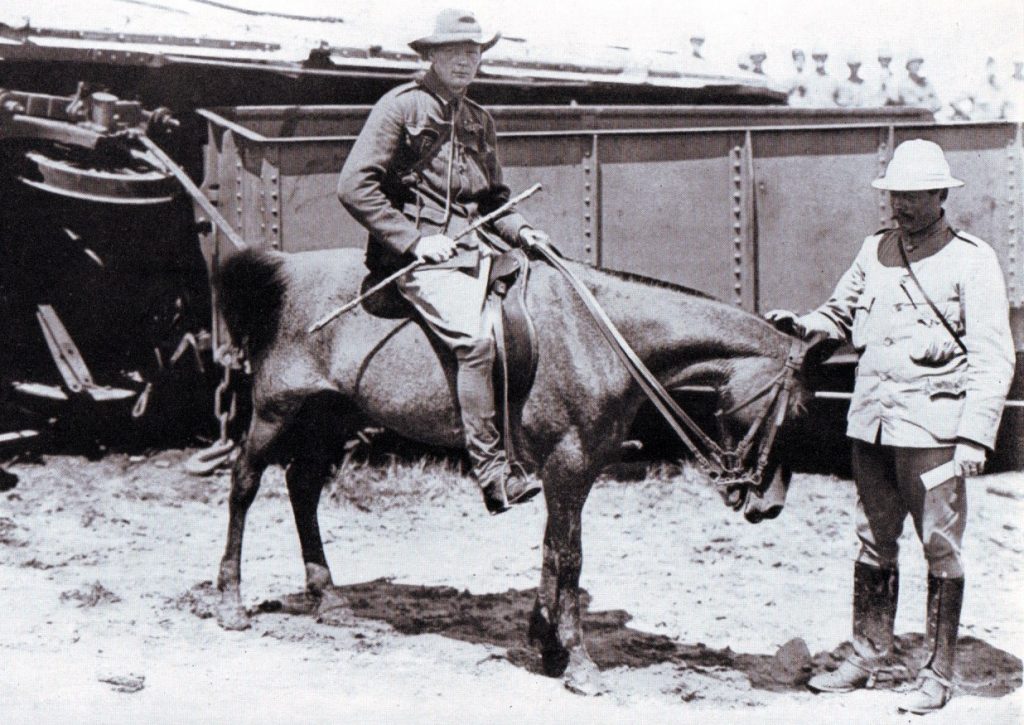
March 13, 2016
Finest Hour 171, Winter 2016
Page 14
By Candice Millard
As the armoured train inched along the low, rolling hills and flat, open spaces of the South African veldt on the morning of 15 November 1899, every man on board knew that the enemy was watching. Where exactly they were, however, and whether they would attack, remained a dark, seemingly impenetrable mystery. Although the Boer War had begun just a month earlier, the British had already learned a painful lesson: the harder it was to find the Boers, the more dangerous they were likely to be.
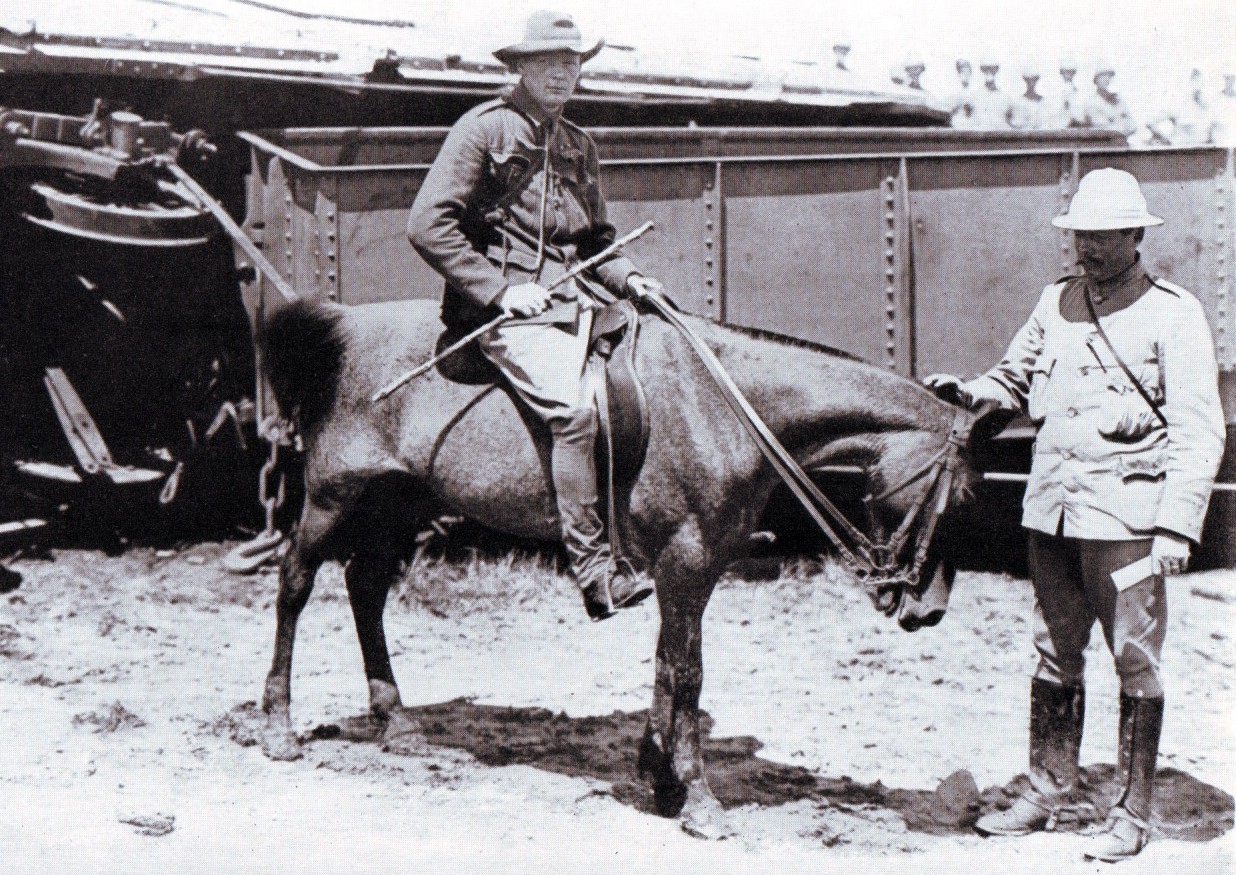 Of Dutch descent, the deeply religious Boers had not wanted war. On the contrary, they wanted nothing more than to be left alone. War, however, like wealth, had found them. The trouble had begun more than thirty years earlier, when diamonds and, later, gold were discovered in the Transvaal, one of two Boer republics. “This gold,” said Paul Kruger, who served as president of the Transvaal during the war, “will cause our country to be soaked in blood.”1
Of Dutch descent, the deeply religious Boers had not wanted war. On the contrary, they wanted nothing more than to be left alone. War, however, like wealth, had found them. The trouble had begun more than thirty years earlier, when diamonds and, later, gold were discovered in the Transvaal, one of two Boer republics. “This gold,” said Paul Kruger, who served as president of the Transvaal during the war, “will cause our country to be soaked in blood.”1
Kruger’s prediction had come true just a few years later. In 1880, Britain annexed the Transvaal, leading to what became known as the First Boer War, a war that, to the shock and horror of the British people, ended in Britain’s defeat. Although, as a condition of the peace agreement, Britain agreed to respect the independence of the Boer republics, before long it was once again pressing in on the Transvaal, amassing troops at its borders and claiming large swaths of new territory that effectively cut it off from the sea. Having had enough, the Boers issued an ultimatum in October 1899 that the British disdainfully ignored.
News of the impending war had sent not waves of terror or even ripples of concern throughout England, but a thrill of excitement. Although there had rarely been a time when the British Empire was not at war in some far-flung colony, this was different. This would be a European war on African soil, a “civilized” war between men of European descent. The fact that the land over which they were fighting had been inhabited by Africans for millennia was of no more concern to the British or the Boers than the claims of Native Americans had been to the pioneers in North America.
Determined as the British were to even the score with the Boers, they did not like giving up their dashing uniforms for the new kit: dull, unromantic khakis—a change so startling to Britons that they had nicknamed this the Khaki War. There was one concession to modern warfare, however, that British officers and their men refused to make: under no circumstances would they hide from the enemy. It was a point of pride not only to appear utterly fearless on the battlefield, but to show no regard at all for their personal safety. A soldier, they believed, stood in the open and faced his death like a man. “These experienced soldiers never care how fast bullets may whizz about them,” Solomon Plaatje, a native South African journalist and intellectual, wrote after watching in astonishment as the British fought the Boers. “They stroll about in a heavy volley far more recklessly than we walk through a shower of rain.”2

2024 International Churchill Conference
In sharp contrast to their enemy, the Boers saw no shame in hiding. On the contrary, it would not occur to them to fight in the open any more than it would to hunt without cover. The Boer “went out in a business-like way to kill men as he would to kill dangerous wild beasts,” wrote Leo Amery, a journalist for the Times of London, “and he saw no more glory in dying at an enemy’s hand than in being eaten by a lion.”3
Unlike the British, the Boers also knew the South African terrain inside and out, high veldt and low, kopje, and valley. Over seemingly impossible terrain, wide open, largely treeless spaces that offered precious little cover, thousands of Boer soldiers, known as burghers, could vanish without a trace. They built sangars, small shelters made from stones, dug deep and remarkably long trenches—some stretching for thirty miles—and used smokeless gunpowder. Even when under attack, the British could rarely find the enemy. It was, a journalist for the Manchester Guardian wrote, a “conspiracy of invisibility.”4
Churchill of the Morning Post
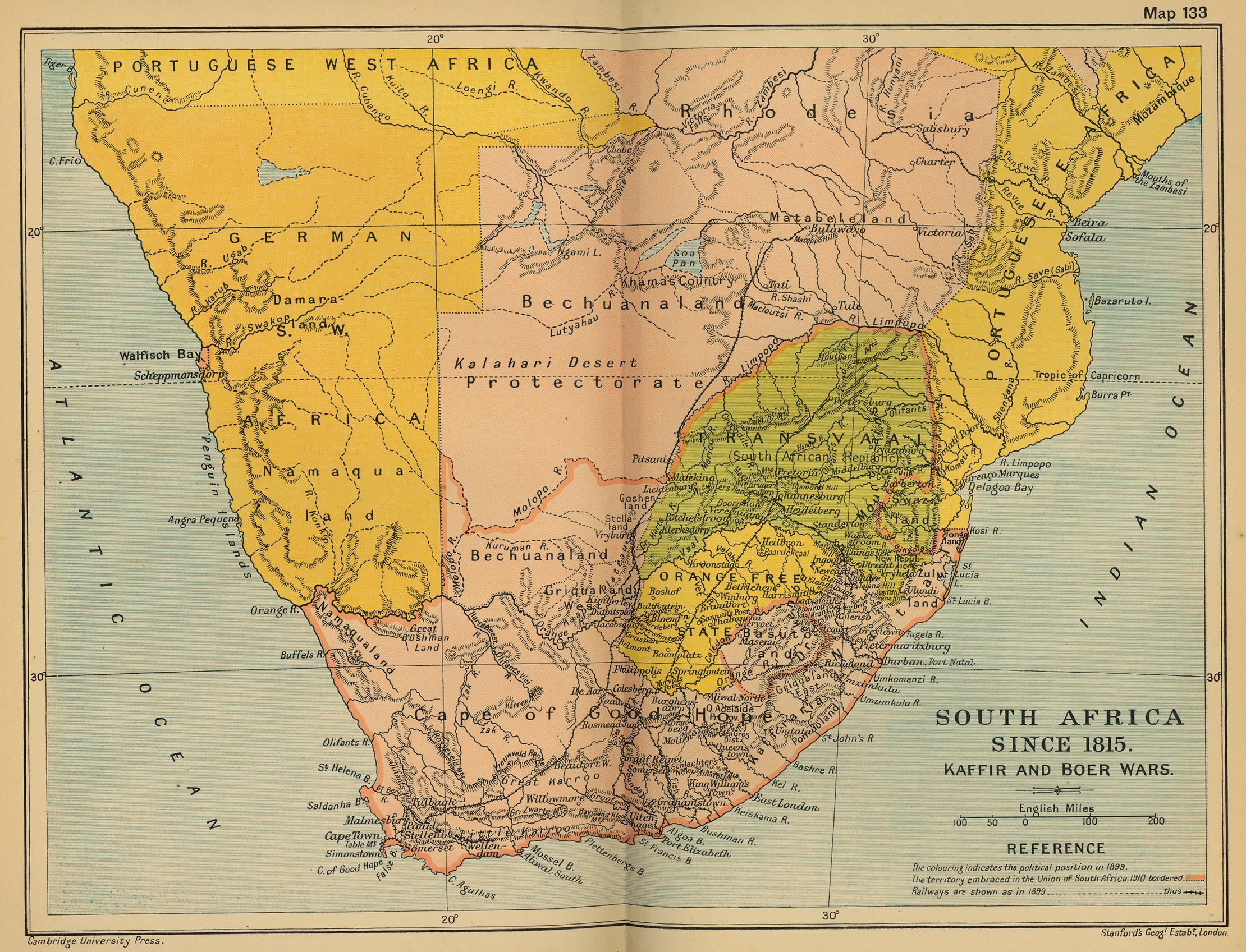
I f anyone aboard the armoured train was going to spot the Boers, it was the red-haired young journalist for the Morning Post who, when he had climbed aboard that morning, had made sure he had the best view of the veldt. From the moment he had set sail for southern Africa, just days after war was declared, Winston Churchill had done everything in his power to reach the front. He had been on the same ship out of Southampton as Sir Redvers Buller, the Commander-in-Chief. After landing in Cape Town and realizing that Buller’s thousands of men, dozens of horses, and countless supplies would take a long time to reach the front, Churchill had left them behind. With just one other journalist, he had struck out on his own, taking the last train out of Cape Town to make it through enemy territory, crossing hundreds of miles of desert from west to east, miserably enduring a “horrible Antarctic gale” in a tiny ship on the Indian Ocean, and catching a ride aboard a mail train out of Durban.5
When Churchill had finally reached the British colony of Natal, he had learned that Ladysmith, a garrison town that was the new front for the war, was already under siege. No one could get out, and—to Churchill’s frustration and fury—no one could get in. The only way he could even get close to the front was by pitching his tent with a handful of British regiments in Estcourt, a small town forty miles south of Ladysmith, and boarding an armoured train sent out for reconnaissance day after day. It was far from an ideal situation. Not only would he not be able to see anything that was happening in Ladysmith, but even Churchill, who was more than willing to risk his own life in war, was not eager to climb aboard the armoured train.
Although in theory the trains were useful, cleverly designed with heavy armour and carriages in front to protect the engines, in reality the men aboard were offered up to the enemy for slaughter. “Nothing looks more formidable and impressive than an armoured train,” Churchill later wrote, “but nothing is in fact more vulnerable and helpless.”6 The same tracks that could quickly carry men and supplies to the heart of the war, and which the Boers were loath to destroy, ensured that the trains were fixed and irresistible targets. The Boers had to do little more than sit and wait for their prey to come to them. Already they had successfully attacked two British trains, killing and capturing men and officers and, in Churchill’s words, gaining “the advantage of drawing first blood.”7
The loud, lumbering train that ran out of Estcourt every day was as conspicuous as the Boers were invisible. “It would be hard,” wrote Leo Amery, who was sharing a bell tent with Churchill, “to devise a better target than…that death trap.”8 The two journalists had been on the train together once before, and had been so relieved to climb back out that they had vowed never to go again. Just a week later, however, when an old friend of Churchill’s, Aylmer Haldane, was ordered to take the train out on the morning of 15 November, Churchill agreed to go with him. He knew it was a bad idea, but it was better than watching the war play out from a distance.
“Pushful the Younger”
Churchill had never been willing to sit on the sidelines. Although he was only twenty-four years old, he had already taken part in wars on three different continents. He had seen his friends not just killed but mutilated, their limbs torn off, their eyes carved out, blood-soaked and screaming. He had killed men himself, coming so close to one man that his pistol had actually struck him as Churchill galloped by. He knew the reality of war as well as any man his age, and better than most. “You cannot gild it,” he had written to his mother from Khartoum during the Sudan campaign. “The raw comes through.”9
As much as Churchill had seen of the horrors of war, however, he was not about to turn away from it. Military distinction was, he believed, the fastest route to public acclaim, personal fame and—if the gods were smiling—political power. As soon as he was given his first commission, Churchill had set out to win as many medals as the army had to offer. In fact, so determined was he to win wide recognition that one of the most damning accusations that could be made against a British military man had already been leveled against him. He had been called a “medal hunter,” a “self-advertiser,” and even, by one sneering journalist, “Pushful the Younger.”10
Churchill was not unaware of these criticisms and later admitted that he found them painful, but he was not about to let them stop him. There was too much to be gained. His natural disposition shunned undue modesty as, at best, a waste of time and, at worst, an obstacle to rapid advancement. “The immortal Barnum himself had not a greater gift for making himself and his affairs the talk of the world,” Churchill’s first biographer, Alexander MacCallum Scott, would write just a few years later. “Winston advertises himself as simply and unconsciously as he breathes.”11
Churchill believed that he was destined for greatness. He had, as he had often told his mother, “faith in my star.”12 He just had to prove it to everyone else. This war was his best hope of making a name for himself, of capturing the attention and imagination of the British people. As always, Churchill had a plan. His carefully plotted life, however, was about to take a sudden and wholly unexpected turn.
Into the Trap
On the morning of 15 November, the armoured train went farther than it should have gone, farther than Haldane would have allowed it to go had he not invited Churchill to go with him. “Had I been alone and not had my impetuous young friend Churchill with me…I might have thought twice before throwing myself into the lion’s jaws,” Haldane later wrote. “But I was carried away by his ardor and departed from an attitude of prudence.”13 Although, as Churchill noted, there was not “a sign of opposition or indeed of life or movement” on the veldt stretched out before them, neither he nor Haldane believed for a second that they were alone.14 They were not.
Not only had the Boers been closely watching the train as it bumped along the tracks that morning, but it was a regiment led by the youngest, most charismatic general in the Boer army—Louis Botha. Standing nearly six feet tall with dark hair and violet-blue eyes, Botha was as quiet and modest as Churchill was brash and outspoken, and he was widely admired and trusted by his men. Although the Boers revered age, Botha, at just thirty-seven, was not only a general but would soon be made commander of the Transvaal’s entire southern force.
Botha’s orders that afternoon were not to attack the train as it crawled toward Ladysmith, as easy a target as his men had yet seen in this war, but, instead, to wait. Their patience, he knew, would pay off. Not only was the train impossible to miss on the bare landscape, looking, Churchill wrote, like a “long brown rattling serpent with the rifles bristling from its spotted sides,” but there was no mystery about where it was headed.15 No matter how far it went, it eventually had to return to the same place, on the same tracks.
As soon as the train had passed them, moving slowly north, Botha and his men swept south, toward Estcourt. They stopped when they reached a steep slope that had a sharp curve at the bottom. As a heavy spring rain fell in sheets around them, they began piling large stones onto the tracks at the foot of the slope. Then, pushing their guns up the hills that flanked the rail line, they waited for the train to return. Their plan was simple. As soon as the train reached the summit, they would open fire on it. In a frantic attempt to escape the hail storm of bullets and shells, the driver would force
the engine down the slope as fast as he could make it go. When he reached the bottom, the rocks would be waiting for him.
Although the rain had not stopped by the time they finished their work, the Boers, who spent most of their lives outside on the veldt, made no attempt to seek cover. Pulling their tattered bush hats low over their faces, they calmly took out their pipes and lit them as best they could. There was little to do until they heard the low, rumbling sound of the approaching train, bringing the enemy, and a particularly restless young journalist, into their trap.
Candice Millard is the author of Hero of the Empire: The Boer War, a Daring Escape, and the Making of Winston Churchill to be published by Doubleday in September.
Endnotes
1. Paul Kruger, The Memoirs of Paul Kruger (Cape Town: Argus, 1902), p. 180.
2. Solomon Plaatje, Boer War Diary of Solomon T. Plaatje (Whitefish, MT: Kessinger Legacy Reprints, 1998), p. 38.
3. Leo Amery, ed., Times History of the War in South Africa, 1899–1902, 7 vols. (London: Sampson Low, Marston and Company, 1902), vol. II, p. 24.
4. John Atkins, The Relief of Ladysmith (London: Methuen, 1900), p. 148.
5. Winston S. Churchill, My Early Life (New York: Touchstone, 1996), p. 241.
6. Ibid., 244.
7. Winston S. Churchill, From London to Ladysmith via Pretoria (Rockville, MD: Wildside Press, 2005), p. 14.
8. Amery, vol. II, p. 115.
9. Randolph S. Churchill, ed., The Churchill Documents, Volume 2, Young Soldier, 1896–1900 (Hillsdale, MI: Hillsdale College Press, 1967), p. 974.
10. Churchill, My Early Life, p. 162, and Virginia Cowles, Winston Churchill: The Era and the Man (New York: Grosset and Dunlap, 1956), p. 55.
11. Alexander MacCallum Scott, Winston Spencer Churchill (London: Methuen, 1905), p. 11.
12. Churchill Documents, p. 784.
13. Aylmer Haldane, A Soldier’s Saga (Edinburgh: William Blackwood and Sons, 1948), p. 142.
14. Churchill, My Early Life, p. 244.
15. Churchill, London to Ladysmith, p. 32.
Subscribe
WANT MORE?
Get the Churchill Bulletin delivered to your inbox once a month.
